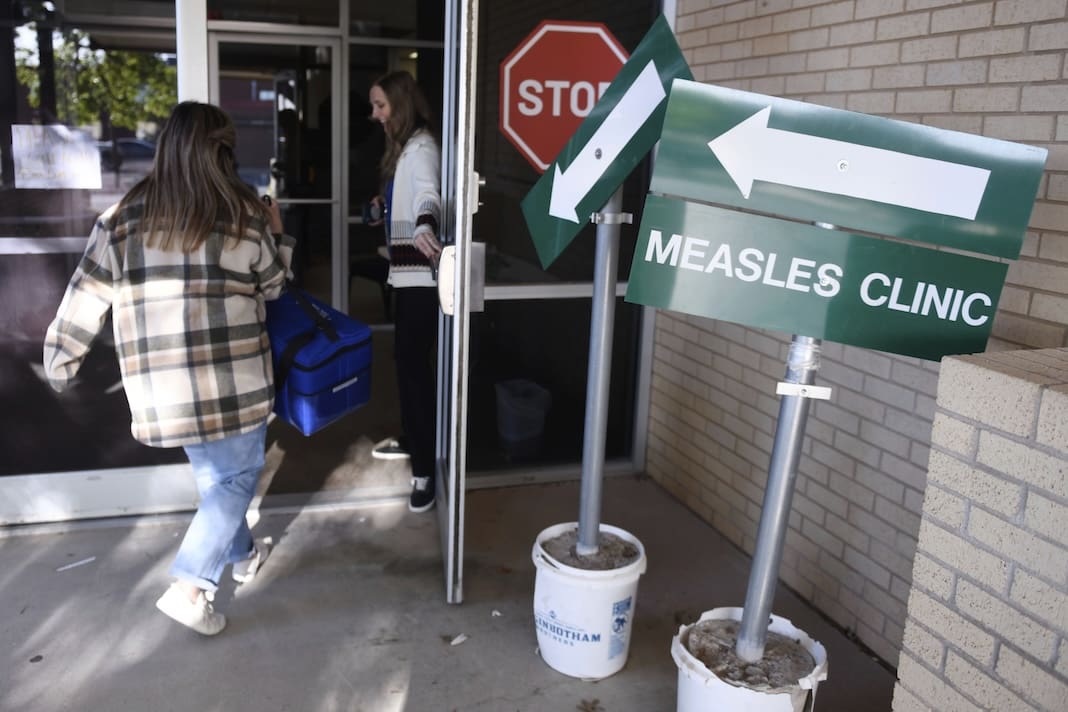An alarming resurgence of measles cases has been confirmed across multiple states, with Kansas health officials reporting five additional cases in the southwest region, linked to outbreaks in Texas and New Mexico. This development comes amid a national increase in cases, with the CDC redeploying teams to affected areas.
Currently, the United States has seen a significant uptick in measles cases, surpassing 700 nationwide. Texas has emerged as the epicenter, with two unvaccinated children succumbing to the disease. New Mexico has also reported a measles-related death in an unvaccinated adult.
Impact on Texas and New Mexico
In Texas, the outbreak began in late January and has since expanded to 561 cases across 23 counties. Gaines County, with a population of 22,892, is heavily affected, reporting 364 cases linked to low vaccination rates in a local Mennonite community. The Texas Department of Health has noted that a small percentage of these cases remain actively infectious.
New Mexico, closely tied to the Texas outbreak, has recorded 63 cases, with the majority in Lea County. Genetic testing confirms these are connected to the Texas cases. The state reported its first measles-related fatality in March.
Measles Spread in Kansas
Kansas has identified 37 cases spanning eight counties in the southwest, with Haskell County reporting the highest number at eight cases. The initial case in Stevens County was genetically traced back to the Texas and New Mexico outbreaks, though the exposure source remains unidentified.
Outbreaks in Other States
Oklahoma has reported 12 cases, with initial cases linked to the outbreaks in Texas and New Mexico. Meanwhile, Ohio’s Knox County has experienced an outbreak reaching 20 cases, influenced by a case involving international travel. Indiana has confirmed six cases in Allen County, with no ties to other known outbreaks.
Beyond these states, measles cases have surfaced in various others, including Alaska, California, and New York. The CDC defines an outbreak as three or more related cases, with several clusters meeting this criterion in 2025.
Preventive Measures and Vaccine Recommendations
The MMR vaccine remains the most effective measure against measles. It is recommended for children between 12 to 15 months and then again between 4 to 6 years of age. High-risk individuals in outbreak areas may consider boosters, especially if they interact with infected individuals or have underlying health conditions.
According to the CDC, adults with verified immunity do not require additional vaccinations unless previously immunized with a less effective “killed” virus vaccine before 1968. A lab test can assess immunity levels, though it may not be routinely recommended or covered by insurance.
Understanding Measles Symptoms and Treatment
Measles symptoms begin with a respiratory infection and progress to fever, cough, and a characteristic rash. Complications can be severe, leading to pneumonia or even death. As there is no specific treatment, medical care focuses on symptom management and preventing complications.
The Importance of Vaccination Rates
High vaccination rates are crucial in preventing the spread of measles, as they contribute to herd immunity. However, a decline in vaccinations since the pandemic has led to increased vulnerability, underscoring the need for maintaining and improving immunization coverage.


